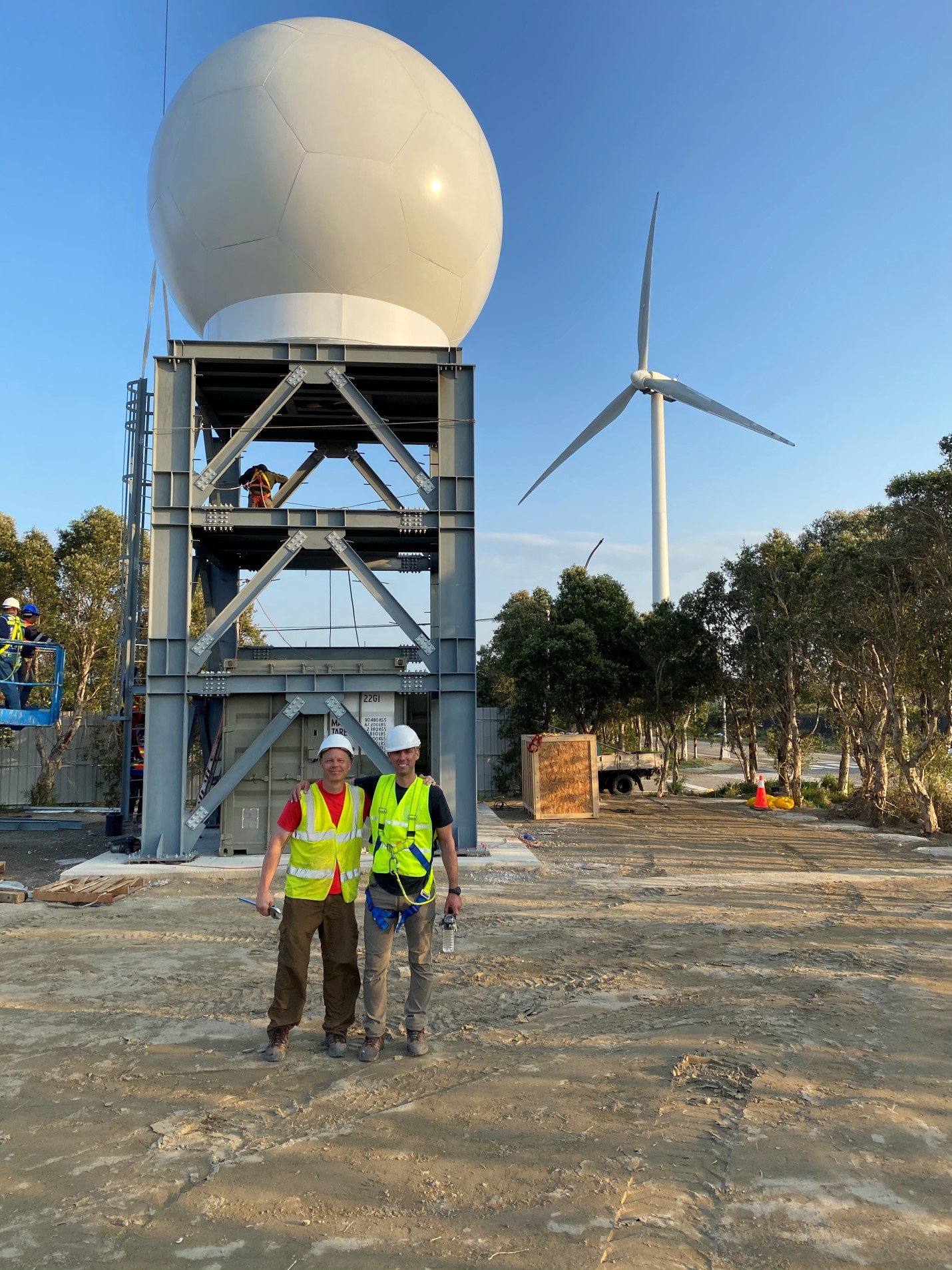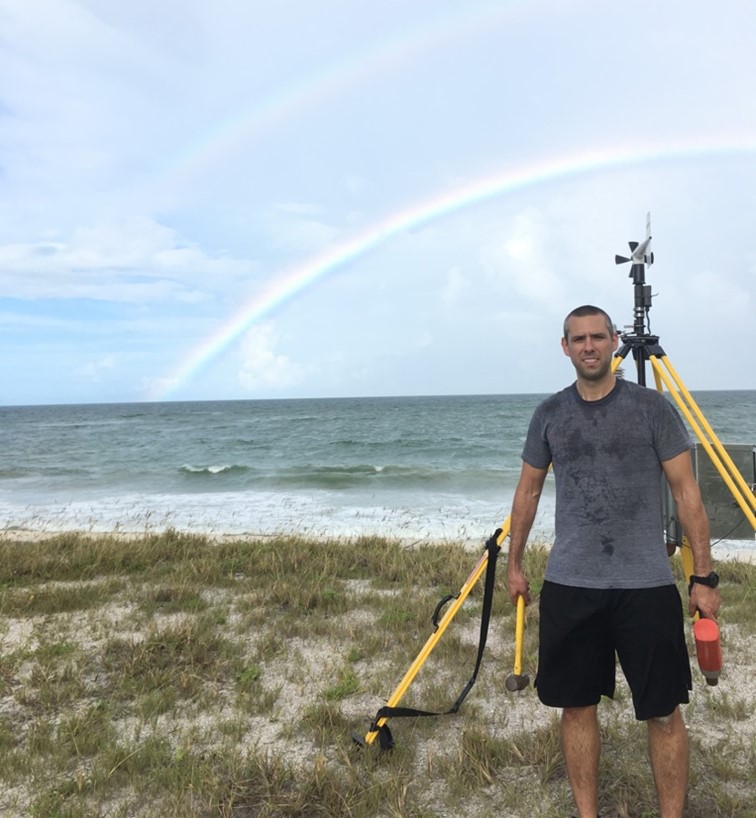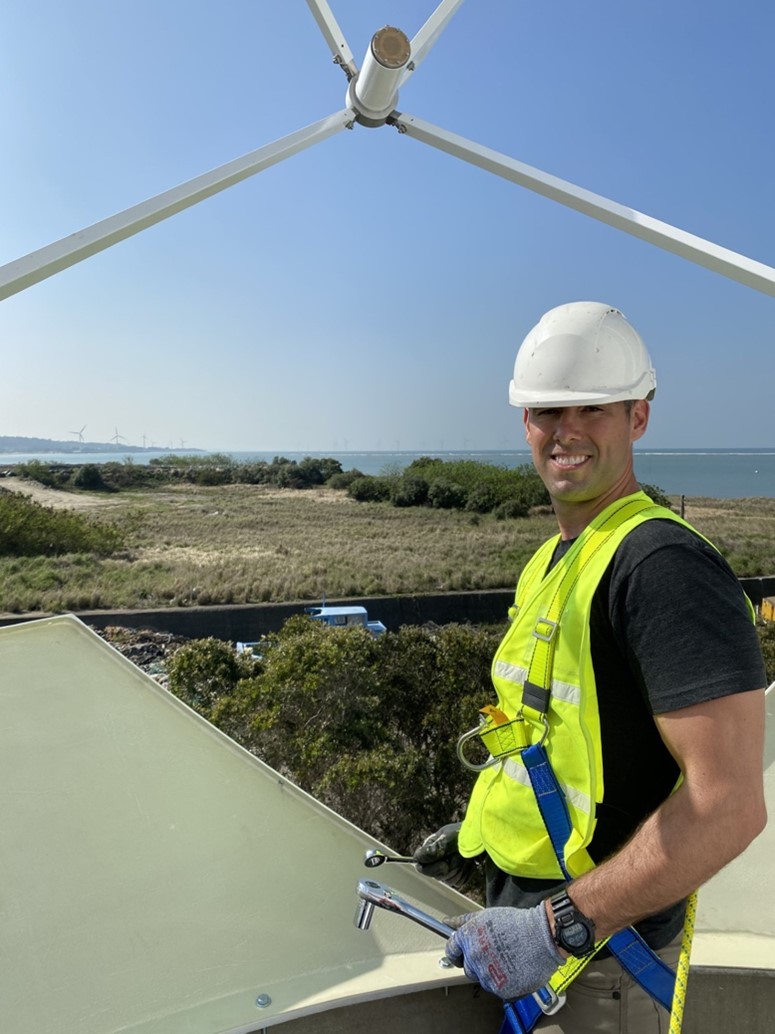Brian Hirth, NWI faculty member, talks about evolving fundamental atmospheric science concepts into industry applications.

The National Wind Institute (NWI) differs from a traditional collegiate department in many ways. Instead of focusing on a single discipline, NWI hosts diverse faculty from many backgrounds. This structure breaks traditional academic barriers and allows innovation at the highest levels. Results of these unconventional structures can lead to, for example, understanding how fundamental concepts of atmospheric science can explain various phenomena in other scientific communities. Brian Hirth, a research professor for NWI, is at the forefront of these innovations and understands their importance.
The Ohio native started learning the importance of these innovations at Texas Tech as an atmospheric science master's (‘05) and Ph.D. (‘11) student, and now faculty member.
“The projects that we take on in our research group are a little different and unique at times because we often aim to tackle very applied problems.”
Hirth explained that many of the group's projects are based on needs within various wind-related industries. What originally started as basic tornado research in his master's degree, and radar-related hurricane measurements for his PhD evolved into applying atmospheric measurement concepts towards commercializing technology and data analysis techniques for wind energy-related problems. Being able to join fundamental atmospheric research concepts to various engineering fields to create meaningful impacts on how businesses can operate is most rewarding for him.

Hirth deploying a StickNet before a hurricane.
“It's an added layer of satisfaction when you know that not only have you completed a research project and advanced the current state of the science, but people are also going to use what you have done to improve their businesses.”
Though rewarding, applying fundamental concepts to industry is not for the faint of heart.
“You are doing something no one has ever done before.”
There are no textbooks linking the various scientific fields, and no one has answers to these applied questions. The idea of linking the atmospheric and engineering communities within wind-related research is relatively new.
“Every hurdle you overcome, you just become more confident in your ability to take on the next one.”
Hirth explained how keeping an open mind and allowing oneself to evolve is crucial
in these studies; and how keeping this mentality boosts him to continue this research.
Hirth has evolved the field through many projects over the years. He was involved
in the creation, evolution, and now, deployment of the mobile weather station platforms,
called StickNets, during landfalling hurricanes. He also has heavily contributed to
the development of commercializing radar concepts for wind energy applications.
“[What started with] taking the KAs [radars] to measure wind turbine wakes, and then seeing that whole research endeavor sort of proliferate into now there are [commercial] radars operating around the world to serve the wind energy industry.”
Recently, Hirth can be found working on a Department of Energy funded project called the American Wake Experiment (AWAKEN). The project is the largest of its kind, focusing on the interactions of the atmosphere, surface, and wind turbines, as well as the large-scale interactions between neighboring wind farms. For the project, Hirth and fellow faculty at NWI designed and deployed two custom X-Band radars. The radars focus on capturing the small details of the wind and atmosphere and their impacts on wind farm performance. The two radars produce at least 150 GB of raw data in one day alone. For comparison, this amount of data equates to about 75 full-length movies. The project contains over 25 universities, government entities, and industry partners. All these groups each bring their own perspectives and knowledge to tackle and improve wind farm operations.

The strengths of NWI have uniquely positioned TTU to provide valuable contributions to largescale projects like AWAKEN, including the diverse backgrounds and perspectives found within NWI.
“The National Wind Institute is an interdisciplinary playground that allows researchers of very diverse backgrounds to come together and work on unique, multidisciplinary tasks,” he said.
He urges up-and-coming students and researchers to keep an open mind and not confine themselves to just one area of study.
“Through your research you may discover something way more rewarding and way more satisfying to explore that you haven't previously considered.”
